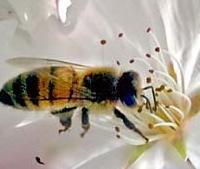Traditionally, scientists assumed that the basic physics of insect flight resembled the basic physics of human aviation.
For example, there’s an urban legend that many decades ago, scientists analyzed the plump bodies and stubby wings of bumblebees and concluded they were too heavy to fly.
~
To fly, every moment (the insect) has to be constantly figuring out: ‘Am I yawing? Am I pitching? Am I rolling? Am I drifting backward? Am I falling? Am I rising?’ And all that information is constantly streaming into a brain the size of about a poppy seed. Understanding insect flight requires understanding how that little ‘computer’ works — and that’s just as essential as understanding how the wings work.In the 1990s, experimenters using sensitive observational equipment and high-speed cameras discovered that a beating insect wing forms a swirling funnel of air — technically known as the leading-edge vortex, a kind of micro-tornado — just above, and clinging to, the upper part of the wing. Air pressure inside the vortex is lower than surrounding air, just as air pressure inside a tornado is lower than in surrounding air. Thus higher-pressure air beneath the bug wing pushes it upward, providing lift to the insect.
A stable leading-edge vortex, Ellington thinks, is what keeps most insects aloft. True, it doesn’t explain their aerial acrobatics, but another phenomenon, recently discovered by Michael Dickinson at the University of California at Berkeley, might help. At the end of each downstroke and upstroke–as it enters the turns of the figure eight–an insect wing rotates, shedding the leading-edge vortex. For an instant, the rotation accelerates the airflow over the top of the wing, thus generating a burst of even greater lift. By controlling the timing of those wing flips, the insect can steer the direction of the lift.
~
With military funding, Ellington and Dickinson are both now trying to build flying microvehicles.
True flight is shared only by insects, bats and birds. Examples of other animals that are capable of soaring are flying fish, flying squirrels, flying frogs, and flying snakes.
